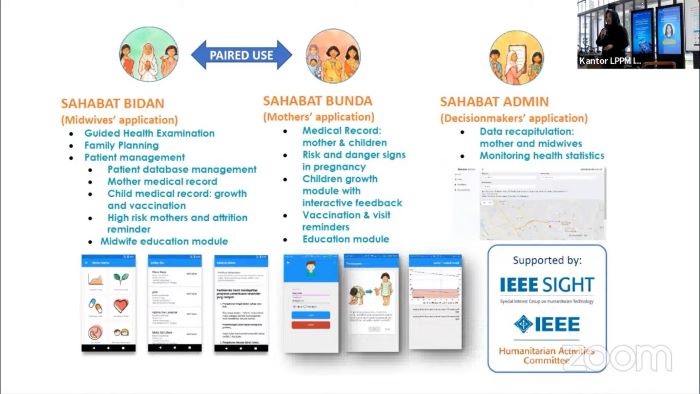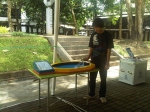Art+Technology Dialogue: Collaboration of Art, Design, and Engineering in Biomedical Application Development
By M. Naufal Hafizh, S.S.
Editor M. Naufal Hafizh, S.S.

BANDUNG, itb.ac.id — The Institute for Research and Community Service (LPPM) of Institut Teknologi Bandung (ITB) hosted Art+Technology Dialogue Vol. 4 with the theme "Art, Design & Engineering: Joining Forces for A Healthier Future” on Monday (4/3/2024). The event took place at the Design Centre FAD and featured Allya Paramita Koesoema, S.T., M.T., Ph.D., from the Biomedical Engineering Expertise Group, School of Electrical and Informatics Engineering (SEEI) ITB as the speaker.
Dr. Allya explained that Biomedical Engineering is an intersection of engineering, science, and health. The collaboration of these fields has led to various health technology innovations that are highly beneficial to humans. Examples of biomedical engineering implementations now widely recognized in modern health care include bioelectronics, Artificial Intelligence (AI), and robotics.
"How technology is for people, not people for technology. We should not become slaves to technology, but rather how technology can help us become more human," she stated.
ITB, as a research and teaching institution, has also strengthened research in the field of biomedical through the development of various health technologies by several faculties. However, according to her, these technologies often lack design aspects, making their functional value less optimal. Therefore, collaboration between art, design, and technology is necessary to bridge the optimization of these technologies for human use.
In this collaboration scheme, art and design can work on product design, graphic UI/UX design, and expanding technologies (humanizing technologies). Meanwhile, the engineering field can assist in measurement and quantification, as well as facilitate art exploration through existing technology.

During the event, she discussed a recent collaboration project, a mobile health application named “Sahabat Bunda”. This app focuses on maternal and child health with simple technology adapted to local needs. Sahabat Bunda is designed with three user modules: for midwives, for mothers, and for policymakers (government).
"If ITB says we want to be globally respected, but we also want to be locally relevant. So how the existing technologies can be used for our friends in Indonesia," she explained.
Over time, the Sahabat Bunda app has undergone many changes from the initial design to adapt to field needs. Besides the digital version, the research team innovated with a non-digital medium in the form of a board game for family financial management literacy called “Bunda Cermat”. Dissemination results in several regions in Indonesia show that financial management patterns vary by region. These conditions are taken as input for system adaptation.
"We make this kit adapted to local culture. Therefore, we need to be able to experience it as well, highlighting the importance of man-design and humanities here," she said.
Additionally, there is a toolkit named “Kapan Ya Bu?” to remind of important milestones in pregnancy and child development. To date, the entire project continues to be developed and worked on in stages. The hope is that similar application models can be continuously improved and augmented with the latest features relevant to current and future needs.
Lastly, Allya reminded that the biggest challenge in multidisciplinary collaborative design is the different backgrounds. This leads each individual to bring different perspectives, concepts, and technologies. Therefore, there is a need for an approach that unites these resources into better outputs through an ongoing co-design process.
Reporter: Hanifa Juliana (Urban and Regional Planning, 2020)
Translator: Anggi Nurdiani (Management, 2024)
Editor: Hanifa Juliana (Urban and Regional Planning, 2020)

.jpg)
.jpg)
.png)
.jpg)
.jpg)

